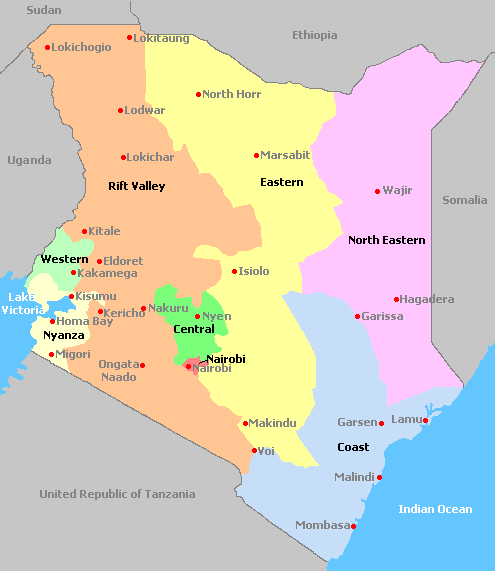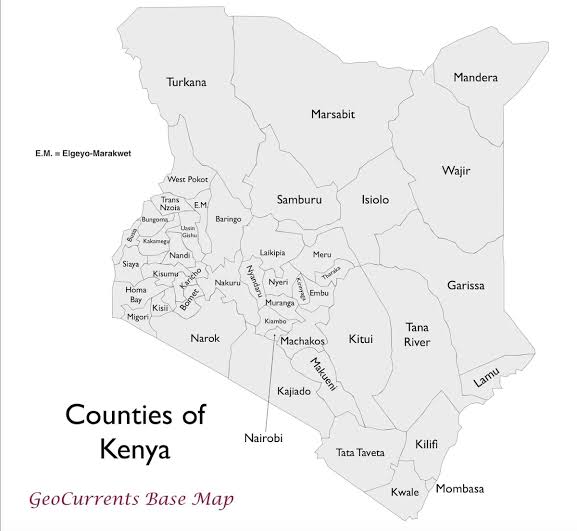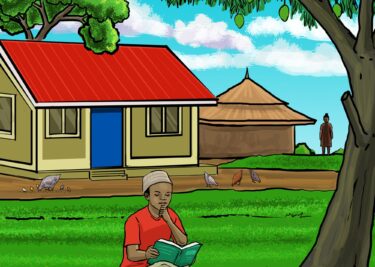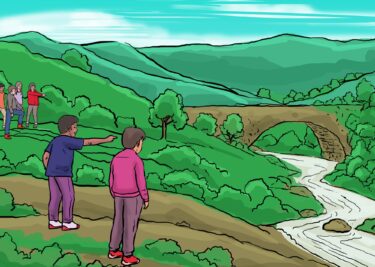Kenya in 2013
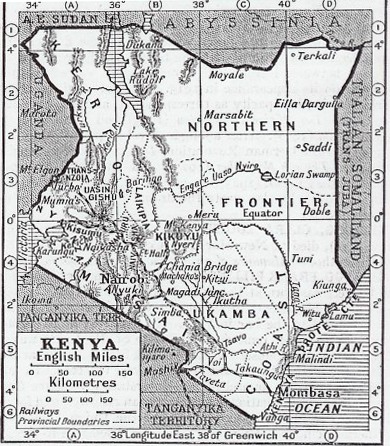
With the dawn of a new decade came a new constitution, and with it a new structure of government for the country. Devolution became the word on everyone’s lips as a new system of government was adapted for the nation, and the county system of administration replaced the provincial system. Looking back almost seven years later it’s hard to believe the county system is less than a decade old. Yet implementation began in 2013, 47 counties replaced the 8 provinces which had been in place since independence. However, this was not the first time that administration systems had been altered in the country. In reality, many changes have taken place, and they date back to over a century ago.
In 1909, when Kenya was still a British protectorate, it was divided into six provinces, namely Kenia, Naivasha, Nyanza, Seyide, Tanaland, and Ukamba. This was the first time that demarcations were officially allocated to this region of East Africa. Before that time, boundaries were simply marked using physical features. Rivers, mountains, and sacred spaces were some of the natural landmarks that informed communities of what land belonged to them.
Three years later, two provinces were added to the list: Jubaland and the Northern Frontier. The administrative boundaries of East Africa were still being developed, and as a result, borders and territories shifted with great ease. These two provinces were a product of annexation of land from Somaliland and Uganda respectively. Other changes that also came into effect in this year were the enlargement of Kenia and Naivasha provinces at the expense of neighboring provinces, and the change in spelling of Kenia to Kenya.
In 1920, the name Kenya came into play and the status changed from a protectorate to a colony of Britain. In line with this, several alterations were made to the new colony’s tailoring. First, the name of Kenya province was changed to Kikuyu to differentiate the country from the province. Then, in 1922, Seyide and Tanaland were merged to form Coast province, Naivasha’s name was changed to Kerio province, and Ukamba province was split into two. One province retained the name Ukamba, and the other was named Masai. Masai, however, was much smaller than the other provinces, and so it was given a district status rather than a provincial one.
Further alterations in territorial boundaries took place in 1925, and all the land west of the Juba River was transferred from Kenyan territory to Italian Somaliland. These changes also translated at the provincial level, and Jubaland was scrapped from the list of Kenya’s provinces.

By 1948, Ukamba, Kerio, and Kikuyu provinces had been done away with, and the areas they used to occupy were restructured into Central and Rift Valley provinces. This remained the status quo until 1955, when the names Masai and Northern Frontier were changed to Nairobi and Northern respectively. A new province, Southern, was also formed in this year, with its capital in Ngong. But the lifespan of Southern province was short, and it was erased from the Kenyan map after a few years.
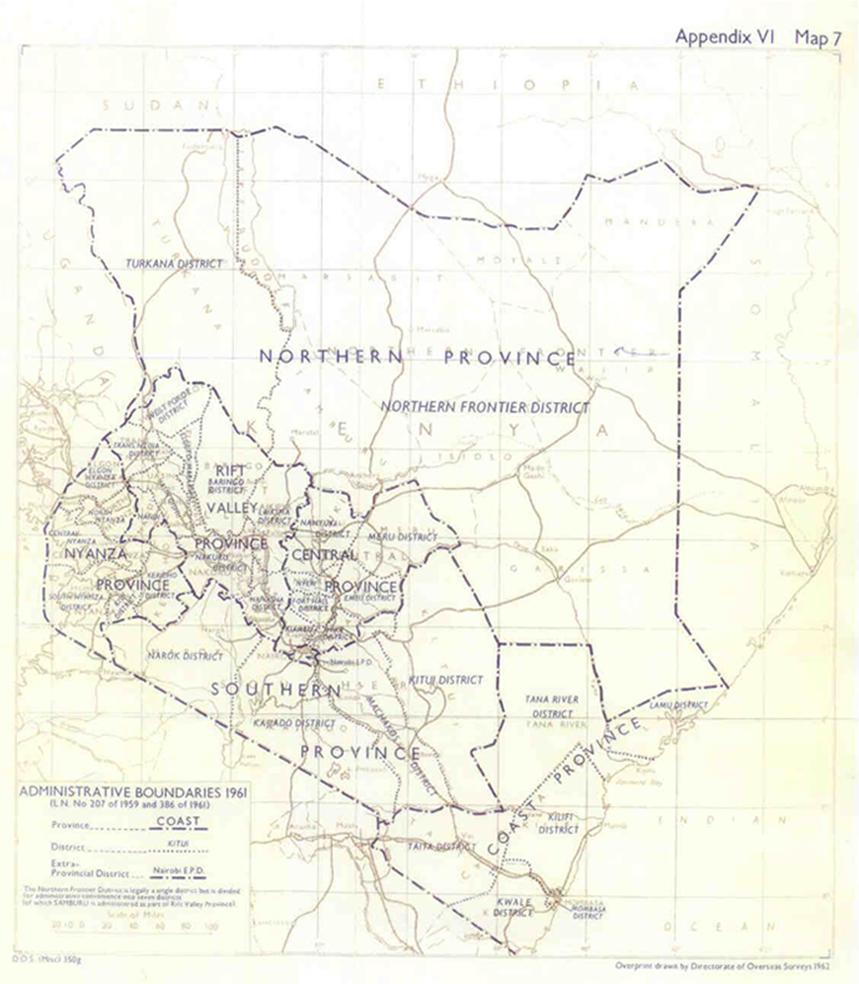
The year before independence, Kenya’s five provinces and one district were reorganized into Central, Coast, Eastern, Northern, Nyanza, Rift Valley, Western, and Nairobi. This was the most enduring reorganization and it remained intact for 51 years. Two final changes were made to this structure. In 1963, the name of Northern province was changed to North-Eastern, and in 1970, Nairobi’s status was at last elevated to provincial level, making it the country’s youngest and smallest, but most densely populated province.
Of all the changes that Kenya’s internal structure has undergone, the devolution of 2013 has been the most impactful. Unlike the provinces, devolution was rooted in the need to bring government services closer to the citizens. Ushering in the era of county administration was undoubtedly one of the country’s biggest milestones in the past decade. What county are you reading this from? Can you trace your county’s roots from 1909?
